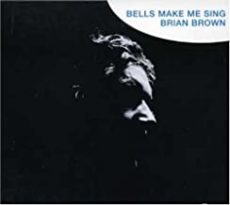
Daily Dose Of Jazz…
Brian Ernest Austin Brown was born on December 29, 1933 in Melbourne, Australia and was a self-taught player and emerged in the 1950s, a leading figure in Australia. He performed as a soloist and with his own ensembles since the mid-1950s throughout Australia and in Scandinavia, United States, Japan, United Kingdom, Italy, Spain, the Netherlands, Brunei and Germany.
In early 1956 Brown returned to Melbourne from Europe and formed the Brian Brown Quintet with drummer Stewie Speer, trumpeter Keith Hounslow, schoolboy pianist Dave Martin and bassist Barry Buckley. The new hard bop band was a regular from 1955 to 1960 at Horst Liepolt’s Jazz Centre 44 in St Kilda, Victoria, Australia. They introduced bop to Melburnians, a musical style largely unheard in Australia.
He made eight albums over an 18-year period heading various groups. Touring Europe with his Australian Jazz Ensemble in 1978, Brian also led groups doing experimental and original classical pieces from 1980 to 1986.
As an educator, he founded the Improvisation Studies course at the Victorian College of the Arts, where he taught from 1978 until his retirement in 1998. He appeared at the World Saxophone Congress in Tokyo in 1988, with Tony Gould. In June 1993 he was awarded the Order of Australia for service to the performing arts.
Soprano and tenor saxophonist, flutist, synthesizer, panpiper, leather bowhorn, composer, and educator Brian Brown passed away on January 28, 2013.
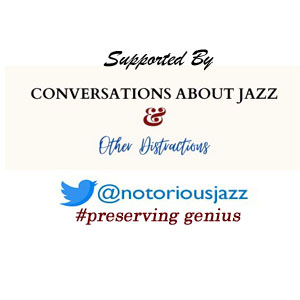
More Posts: composer,educator,flute,history,instrumental,jazz,leather bowhorn,music,panpipes,saxophone,synthesizer
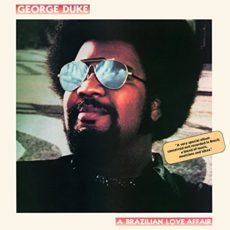
Daily Dose Of Jazz…
George Duke was born on January 12, 1946 in San Rafael, California and raised in Marin City. It was at the young age of 4 that he first became interested in the piano when his mother took him to see Duke Ellington in concert. He began his formal piano studies at the age of 7, at his local Baptist church. Attending Tamalpais High School in Mill Valley, he went on to earn a bachelor’s degree in trombone and composition with a minor in contrabass from the San Francisco Conservatory in 1967.
Initially he played with friends from garages to local clubs, George quickly eased his way into session work, before getting his master’s degree in composition from San Francisco State University. Although starting out playing classical music, his musician cousin Charles Burrell convinced him to switch to jazz and improvise what he wanted to do.
1967 saw Duke venturing into jazz fusion, playing and recording with violinist Jean-Luc Ponty, as well as performing with the Don Ellis Orchestra, and Cannonball Adderley’s band, and recorded with Frank Zappa and The Mothers of Invention on a number of albums through the 1970s. He also played with Ruth Underwood, Tom Fowler, Bruce Fowler from Zappa’s Overnite Sensation band that he was a part of, along with Johnny “Guitar” Watson and jazz guitarist Lee Ritenour. Lynn Davis and Sheila E recorded with him on his late-1970s solo albums Don’t Let Go and Master of the Game.
During the 1980s he collaborated with bassist Stanley Clarke and produced the Clarke/Duke Project that released three albums, he served as a record producer and composer on two instrumental tracks on the Miles Davis albums Tutu and Amandla, worked with a number of Brazilian musicians, including singer Milton Nascimento, percussionist Airto Moreira and singer Flora Purim, and in the 1992 film Leap of Faith featured gospel songs and choir produced by him and choir master Edwin Hawkins.
Duke was musical director for the Nelson Mandela tribute concert at Wembley Stadium in London, temporarily replaced Marcus Miller as musical director of NBC’s late-night music performance program Sunday Night during its first season, and was a judge for the second annual Independent Music Awards to support independent artists’ careers. He worked with Jill Scott on her third studio album, The Real Thing: Words and Sounds Vol. 3; and put together a trio with David Sanborn and Marcus Miller for a tour across the United States.
His educator side had him teaching a course on Jazz And American Culture at Merritt College in Oakland, California. He was nominated for a Grammy as Best Contemporary Jazz Performance for After Hours in 1999, was inducted into The SoulMusic Hall Of Fame in 2012, and was honored with a tribute album My Old Friend: Celebrating George Duke, produced by long-time friend and collaborator Al Jarreau, that received a NAACP Image Award for Outstanding Jazz Album in 2015.
As leader he recorded some four dozen albums and as sideman he worked with such artists as Third World, The Keynotes, Gene Ammons, Billy Cobham, Eddie Henderson, Alphonse Mouzon, Michael Jackson, Deniece Williams, Miles Davis, Dianne Reeves, John Scofield, Chanté Moore, Joe Sample, Phil Collins, Regina Belle, Teena Marie, Joe Williams, Gerald Wilson and Larisa Dolina among many others.
Keyboard pioneer, vocalist guitarist, trombonist, producer and composer George Duke passed away on August 5, 2013 in Los Angeles, California from chronic lymphocytic leukemia. He was 67. His songs have been sampled by Daft Punk, Kanye West and Ice Cube among numerous others.
![]()
#preserving genius
More Posts: bass guitar,flute,keytar,piano,saxophone,synthesizer,trombone,vocal
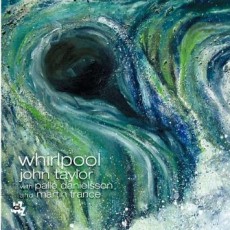
Daily Dose Of Jazz…
John Taylor was born on September 25, 1942 in Manchester, England. The pianist first came to the attention of the jazz community in 1969 when he partnered with saxophonists Alan Skidmore and John Surman. In the early 1970s he was accompanist to the singer Cleo Laine and started to compose for his own sextet.
Taylor worked with many visiting artists at Ronnie Scott’s Jazz Club in London and later became a member of Scott’s quintet. He was later reunited with Surman in the short-lived group Morning Glory and in the 1980s in the Miroslav Vitous quartet. In 1977 formed the trio Azimuth with Norman Winstone and Kenny Wheeler. They made several recordings for ECM Records, performed in the United States, Europe and Canada.
The 1980s saw John working with Jan Garbarek, Enrico Evans, Gil Evans, Lee Konitz, Charlie Mariano, Tony Coe, Steve Arguelles, Stan Sulzman and David Sylvian. From 2006 he was a member of the Kenny Wheeler’s quartet and large ensemble and performed in duo and quartet settings with John Surman. During the 1990s he made several recordings with Peter Erskine Tio with bassist Palle Danielsson.
By the turn of the century he was performing and recording with a new Azimuth collaboration, the Steve Smith Quartet, Maria PiaDe Vito and Ralph Towner, toured with his new trio, received the BBC Jazz Award for Best New Work’ for his Green Man Suite and continued to record.
As an educator he was professor of Jazz Piano at the Cologne College of Music, became a Lecturer in jazz at the University of York, coached and taught undergraduate jazz musicians and was of central importance to the new Master’s degree jazz pathway and in advancing doctoral research and performance in jazz.
While performing at the Saveurs Jazz Festival in Segre, France he suffered a heart attack. Although he was resuscitated at the venue, pianist John Taylor, who occasionally performed on the organ and the synthesizer, passed away after being taken to the hospital on July 17, 2015.
More Posts: organ,piano,synthesizer
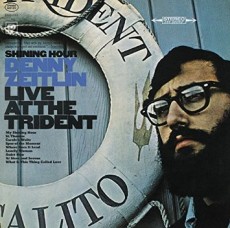
Daily Dose Of Jazz…
Denny Zeitlin was born on April 10, 1938 in Chicago, Illinois and grew up in the suburb of Highland Park. He began improvising on the piano at age two and was composing before elementary school. His father played piano by ear, his mother was his first piano teacher. He began formal study in Western classical music at age six, switching to jazz in the eighth grade. By the time he was in high school, he was playing professionally in and around Chicago.
While in college at the University of Illinois and Urbana-Champaign he was playing with Ira Sullivan, Johnny Griffin, Wes Montgomery, Joe Farrell, Wilbur Ware and Bob Cranshaw. Denny’s mentors included Billy Taylor and George Russell, while Bil Evans supported him by recording his composition “Quiet Now” and giving title to his 1970 album.
Zeitlin began his recording career when signing with Columbia Records in 1963 while studying medicine at John Hopkins University. His debut as a feature pianist was on the Jeremy Steig album Flute Fever along with Ben Riley and Ben Tucker. After moving to San Francisco in 1964 he recorded four albums as a leader for the label. He stood out from the crowd for the unbridled creativity of his work, the richness of his harmonic palette, and the sheer beauty of his piano tone.
Between 1968 and 1978, Denny ventured into electronic keyboards, synthesizers and sound altering devices, integrated them into his music and resulted in the release of Jazzy Spies in 1969 on the first season of Sesame Street. It featured the voice of Grace Slick. He would go on to be awarded Down Beat’s highest award for his Expansion album, score the music for the 1978 remake of Invasion of the Body Snatchers, and by the end of the decade returned focus to acoustic music.
Since 1968, Zeitlin has been on the teaching faculty at the University of California, San Francisco as a clinical professor of psychiatry, has a private practice, and is the founder of Control-Mastery Theory. He does all this while pursuing his passion for jazz, touring internationally and recording more than thirty-five albums to date tha include upwards of 100 original compositions. He is a first-place winner of the Down Beat International Jazz Critics Poll in 1965 and 1974.
More Posts: piano,synthesizer
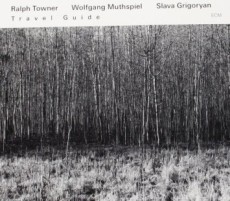
Daily Dose Of jazz…
Ralph Towner was born on March 1, 1940 in Chehalis, Washington. Born into a musical family, his mother a piano teacher and his father a trumpet player, Towner learned to improvise on the piano at the age of three. He started trumpet lessons at the age of five, but did not take up guitar until attending the University of Oregon.
Ralph first played jazz in New York City in the late 1960s as a pianist and was strongly influenced by the renowned jazz pianist Bill Evans. He began improvising on classical and 12-string guitars in the late 1960s and early 1970s; and formed alliances with musicians who had worked with Evans, including flautist Jeremy Steig, Eddie Gomez, Marc Johnson, Gary Peacock ad Jack DeJohnette.
He began his career as a conservatory-trained classical pianist, who picked up guitar in his senior year in college, then joined world music pioneer Paul Winter’s Consort ensemble in the late 1960s. Leaving Winter along with band mates Paul McCandless, Glen Moore and Colin Walcott, they formed the group Oregon, mixing folk, Indian classical, avant-garde jazz and frr improvisation.
Around the same time, Towner began a longstanding relationship with ECM Records, releasing virtually all of his non-Oregon recordings since his 1972 debut as a leader Trios / Solos. As a sideman he has ventured int jazz fsion with Weather Report on the 1972 album I Sing The Body Electric.
Unlike most jazz guitarists, Ralph only uses 6-string nylon-string and 12-string steel-string guitars. He tends to avoid high-volume musical environments, preferring small groups of mostly acoustic instruments that emphasize dynamics and group interplay. He make significant use of overdubbing, allowing him to play piano or synthesizer and guitar on the same track. During the Eighties he used more synthesizer but has returned to the guitar in recent years.
Composer, arranger, bandleader and multi-instrumentalist Ralph Towner, who plays 12 string guitar, classical guitar, piano, synthesizer, percussion and trumpet, has an impressive catalogue of some five-dozen recordings spread between his role as a leader, with Oregon, and as a sideman with Paul Winter and Weather Report among others. He continues to perform, record and tour.
More Posts: guitar,percussion,piano,synthesizer,trumpet


